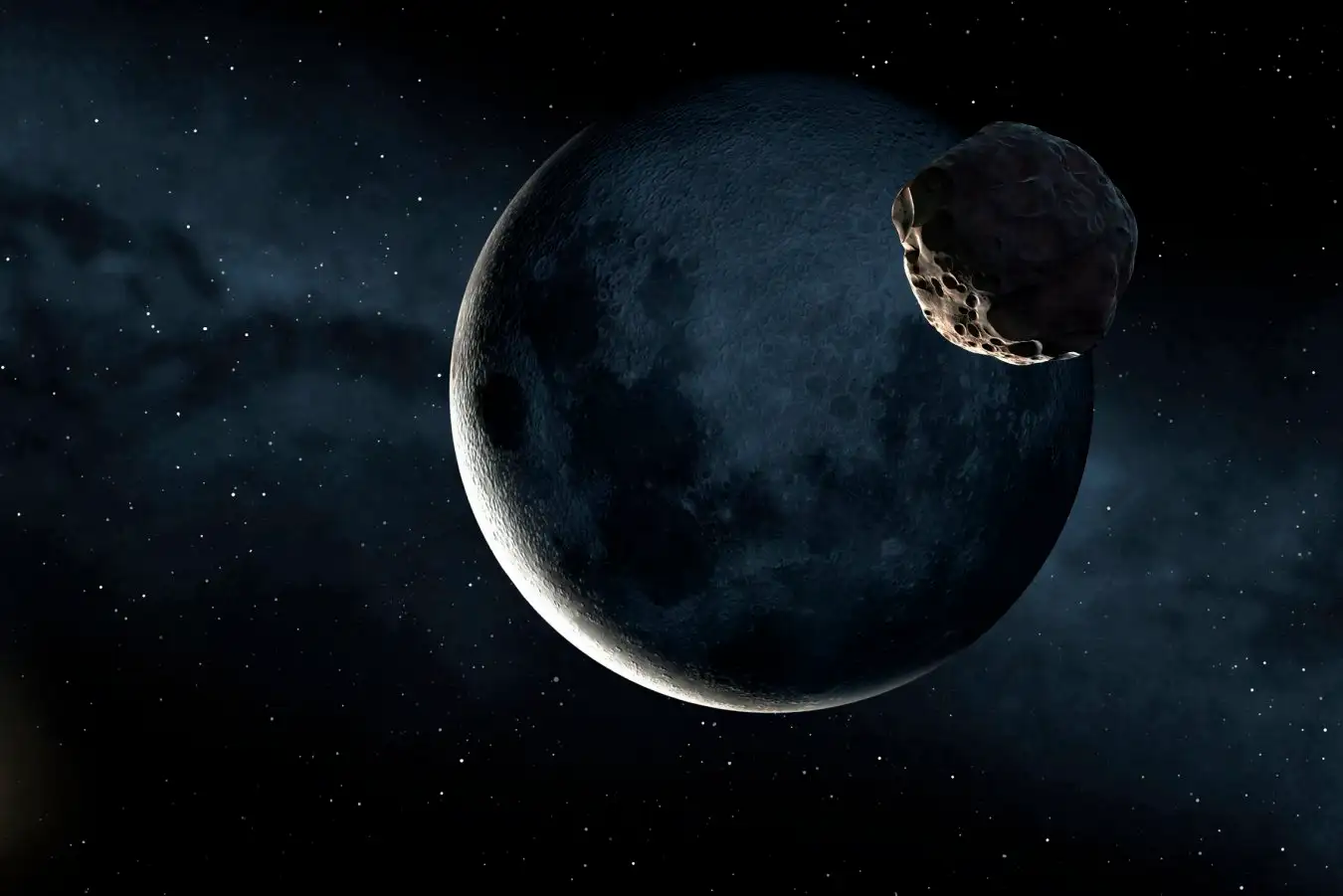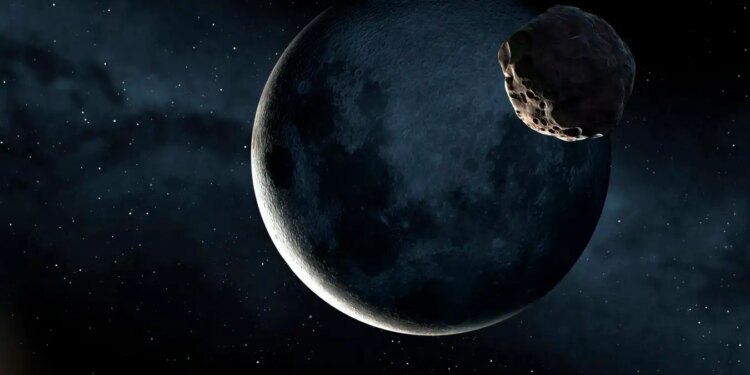
Asteroid 2024 YR4 may hit the moon
MARK GARLICK/SCIENCE PHOTO LIBRARY
Astronomers are running out of time to decide whether to prevent asteroid 2024 YR4 from hitting the moon in 2032. A small observing window with the James Webb Space Telescope will open in February, and new data could see the chance of an impact increase to more than 30 per cent, putting satellites or future lunar infrastructure at significant risk.
2024 YR4 was discovered at the end of last year and was quickly assigned the highest probability of hitting Earth of all known asteroids. At its most perilous, it had a 1-in-32 chance of hitting Earth in 2032. Further observations reduced the probability of an Earth impact to effectively zero, but there remains a 4 per cent chance of the asteroid slamming into the moon, which could put thousands of critical satellites around the planet at risk from lunar shrapnel.
This risk is much higher than from any other asteroid, but the level of risk and uncertainty hasn’t yet spurred the world’s space agencies to act, although researchers at NASA have considered possible deflection scenarios, including detonating a nuclear bomb near the asteroid.
The asteroid has now flown out of view of Earth’s telescope, meaning astronomers thought there was no chance of gathering more information about its trajectory until it returns to view in 2028, which may not be enough time to plan and launch a deflection mission.
But now it seems the James Webb Space Telescope (JWST) will have a brief glimpse at 2024 YR4 in February 2026, which will represent the last good chance to decide on a deflection mission, says Andrew Rivkin at Johns Hopkins University in Maryland. “By 2028, it would be cutting things very, very close, and so getting it in early 2026 instead gives some extra time,” says Rivkin.
It is JWST’s unique orbit around Earth and vantage point that allows it to see 2024 YR4 where other ground-based telescopes cannot, but it will still be an extraordinarily difficult observation due to how faint the asteroid will appear, even for JWST’s extremely sensitive detectors. There will be two narrow viewing windows on 18 and 26 February.
Rivkin and his colleagues have calculated how our understanding of the asteroid’s position and speed could change based on these observations. They found that there is an 80 per cent chance of a lunar collision dropping to below 1 per cent, and a 5 per cent chance of the risk increasing to more than 30 per cent. JWST will then have another chance in 2027 to repeat these observations, but that will leave less time in which to make a decision, says Rivkin.
But whether space agencies will choose to plan a mission if the risk increases is an open question. “Whether planetary defence extends to the moon is a totally new question and different agencies might have different answers,” says Rivkin. “If a company owns a whole lot of satellites, they might be motivated to push for one thing.”
Richard Moissl at the European Space Agency says that there are currently no planned deflection or reconnaissance missions to the asteroid in the agency’s budget for this year, but if observations next year increase the chance of impact, then they will consider their options. “We have decided to definitely wait until next year… in order to have some time available for options,” says Moissl.
Topics:
Source link : https://www.newscientist.com/article/2503607-odds-of-asteroid-2024-yr4-hitting-the-moon-may-rise-to-30-per-cent/?utm_campaign=RSS%7CNSNS&utm_source=NSNS&utm_medium=RSS&utm_content=home
Author :
Publish date : 2025-11-11 14:00:00
Copyright for syndicated content belongs to the linked Source.














